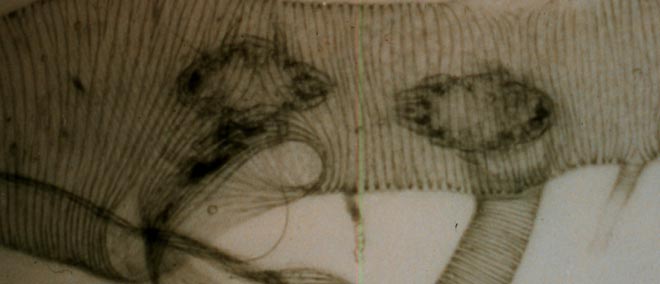
Tracheal bee mite.
Photo by J. G. Thomas.
Common Name: Honey bee mite
Scientific Name: Acarapsis woodi (Rennie)
Order: Acari
Description: These mites, which must be dissected from the bee, are very small and a microscope is required to detect them.
They are whitish in color with oval bodies, and have a shiny cuticle with a few long fine hairs on the body and legs. They are sometimes referred to as “tracheal bee mites” or “honey bee tracheal mites.”
Life Cycle: This small mite is an internal parasite of honey bees. It infests and lives entirely within the tracheal (respiratory) system of honey bees primarily in the prothoracic section, except for short mirgratory episodes. The queens, drones, and workers are all attacked.
Habitat, Food Source(s), Damage: Tracheal bee mites feed by puncturing the breathing tubes of the host with their mouthparts. They feed on blood from the host.
Pest Status: Honey bees infested by this parasite may become unable to fly. Heavily infested bees may crawl on the flor of the hive or cluster in the hive. Life spans of bees are shortened by heavy mite infestations, which cause a condition called acarine disease or acariosis.
For additional information, contact your local Texas A&M AgriLife Extension Service agent or search for other state Extension offices.
Literature: Merchant 1995. Pettis and Wilson 1990.